10 Frequently Asked Questions About Outdoor Omni-Directional Antennas
We’ve already answered questions about Yagi antennas, now we'll answer questions about omni-directional antennas. While they may not be as powerful as directional antennas, they can perform better in some situations, and are easier to install.
The focus of this article revolves around outdoor omni-antennas for cell phone signal boosters, but this article will apply to any omni-directional donor antenna connected to a receiver or transmitter, such as TVs, WiFi routers, radios, etc.
We fix poor cell phone signal! Find the right signal booster for you:




What is an Omni-Directional Antenna?
An omni-directional antenna is an antenna designed to send and receive equal amounts of signal in all horizontal directions. What do we mean by horizontal directions?
Antennas have a certain amount of gain associated with them, which we’ll get into later. When gain is applied to an omni antenna, the radiation pattern around the antenna expands outwards (horizontally), allowing the antenna to reach farther at the cost of emitting less radiation at the top and the bottom. Thus, omni-directional antennas are known to have a “doughnut-shaped” radiation pattern.
The most common omni-directional antenna is a dipole. A basic dipole antenna looks like a T split in half. A common example of a dipole is the rabbit ear television antenna. Most omnidirectional antennas work in the same way as a dipole, so to understand how they work, we’ll be discussing how a basic dipole works. The following explanation may get a bit technical, but we’ll try to keep it as simple as possible.
What is a Dipole Made of?
The word “di-pole” is made up of the prefix “di-,” from the Greek word meaning “two,” and “pole,” which is quite self-explanatory. A dipole is made up of two identical conductive elements, like metal wires or rods. The length, shape, and separation, of the two conductive elements is vital to how the antenna works.
- The length of the antenna determines the size of the electromagnetic waves it can send and/or receive. Longer antennas are designed to pick up waves that operate at lower frequencies, while shorter antennas are designed to pick up waves that operate at higher frequencies. Antennas can work with multiple frequency ranges within the antennas intended purpose. For example, a signal booster antenna picks up frequencies related to cellular signals, a radio antenna picks up AM/FM radio signals, a TV antenna picks up TV signals, and a dual-band WiFi antenna picks up wireless signals within the 2.4GHz or 5GHz range.
- The separation and shape of the two conductive elements make it possible to radiate electromagnetic waves. The two conductive elements have opposite current flows and voltages, which would normally cancel out any electromagnetic energy created by current flow. To be able to radiate electromagnetic energy, the current must flow in the same direction. In the case of a basic dipole antenna, this is possible through the two arms.
- The two bottom halves of the dipole antenna connect to a receiver or transmitter, such as a cell phone signal amplifier, radio, or TV, via coaxial cable to send and receive signals. This is known as the feedline or feeder.
How Does a Dipole Create Electromagnetic Energy?
Electrons move through the conductive elements as current flows through the antenna. Each side is always polarized - one end is always positive, the other always negative. When current is applied, the electrons accumulate on the negative side of the dipole, leaving the other side positively charged. Negative electrons are attracted to any positive charge, encouraging the electrons to flow to the other side. When the energy starts to build on the positive end, the electrical component’s polarity changes.
The electron flow creates an electric field from the positive end of the dipole to the negative end. In addition, the current flow creates a magnetic field encircling the dipole. The combination of the two fields creates the doughnut-shaped radiation pattern. As a result, the electron flow and their associated voltage cause electromagnetic waves to radiated outwards from every horizontal side of the antenna.
Once, the antenna can radiate power, it can send and receive electromagnetic waves carrying information. When electromagnetic waves are captured, the energy travels through the coax cables or feedline and is directed to a receiver.
It's important to note that a monopole antenna works very similarly to a dipole antenna. The only difference is that it uses one metal conductor and a conductive surface (ground plane), such as the Earth. The ground plane is connected to the transmitter's ground wire and serves as a reflecting surface for radio waves. The metal conductor is half of the dipole and ground plane is essential the other half.
Omni-Directional Antennas in Practice
How does this look in practice? After installing a cellular signal booster (also known as a signal repeater or extender) an electrical current will be supplied to the omni-directional antenna. The antenna's components will create an electromagnetic field around it.
The antenna will be exposed to all types of electromagnetic waves, such as radio, TV, and cellular frequencies, but will only grab the ones that fall within the frequencies the signal booster systems support, which are cellular frequencies from AT&T, Verizon, T-Mobile, U.S. Cellular, etc. The cellular signals are fed to the amplifier via coaxial cable for boosting. Oppositely, when you’re sending out information, like a text message, with the boosted signal, the information the message contains is converted into radio frequency waves. These waves travel through the signal booster system and are broadcasted into the air by the outdoor antenna. The wave travels at the speed of light in the direction of where the signal source is located.
What’s the Difference Between Omni-Directional and Directional Antennas?
There are three main differences between omni and directional antennas: shape, radiation pattern, and range.
Directional antennas, such as Yagis, grids, parabolics, and panel antennas, are more powerful than omni-directional antennas. They’re specifically designed to send and receive signals from one direction, allowing them to have farther reach to and from a destination (such as a cell tower). Traditional directional antennas tend to have a beamwidth of 45 to 90 degrees. Long-range directional antennas can have a beamwidth of 7 to 10 degrees. Under perfect conditions, and depending on the type of directional antenna, they can reach over 10 miles. They are ideal for weak signal areas where cell tower distance is the biggest issue.
However, it’s important to note that because they are directional, they can only pick up signals that fall within their radiation pattern. A signal booster with a Yagi antenna, for example, will only be able to amplify carrier signal that falls within that pattern. To amplify multiple carriers in areas with distant cell towers, multiple Yagi antennas pointing at different cell towers may be needed.
Omni-directional antennas, such as dipoles, monopole, and whip antennas, on the other hand, send and receive signals from every horizontal direction - 360 degrees. Thus, they are not as powerful as directional antennas. Since they can’t reach as far as a directional antenna, they are ideal for areas where there are multiple cell towers less than 5 miles away. In this case, to amplify multiple cellular signals, you would only need one directional antenna.
The main drawback associated with omni-directional antennas is that they can easily interfere with outdoor or indoor antennas nearby if there is not enough distance between them, degrading performance.
When Should an Omni-Directional Antenna be Used?
The below information will relate to cellular signal specifically, but Cellular omni-directional antennas work best in situations where:
There are multiple cellular towers nearby
With multiple cell towers no more than 5 miles away, the antenna will be able to pick up multiple signals from every direction. If the towers are more than 5 miles away, a directional antenna will be the better option.
Usable signal is available, but nearby obstacles interfere with the signal
Obstacles sitting between nearby cell tower and your homes, vehicle, or place of work, such as tall buildings, dense foliage, valleys, and bodies of water, can absorb, reflect, and refract incoming radio waves, altering their direction.
Since the obstacles cause inconsistent cell reception, you’re likely to experience below-average signal outdoors, and spotty service indoors, even though the signal source is nearby.
In this case, an omni-directional antenna is perfect - it can pick up the inconsistent cell signals from any direction. The amplifier will boost the signals and the indoor antenna will broadcast the boost 5G (on select frequencies), 4G, and LTE signals indoors.
Sure, a directional antenna would work just as well, maybe even better, but it would only be able to pick up signals from one direction from one or two carriers. If there are multiple towers nearby and you wanted to pick up signals from multiple cell towers to boost multiple carriers, it’s better to use one omni-directional antenna rather than multiple directional antennas, which, if not set up properly, can cause additional signal interference.
Building material blocks cellular signal
If your cellular signal strength is decent outside, but extremely poor inside your home or office, building material is to blame. Metal, concrete, brick, plaster, and low-e glass, to name a few, can weaken or completely block cellular signals from reaching Androids, iPhones, tablets, hotspots, and all cellular devices inside the building.
Signal booster systems will help bypass any building material blocking the signal from entering and broadcast boosted cellular signals for all carriers in the areas where it’s needed most. The outdoor antenna can affect the booster's performance.
Decent outside signal indicates that cellular towers are nearby. If you were to use a directional antenna in an area that is already receiving good quality cellular signal, it may pull in too much signal and cause the booster system to overload, degrading performance or causing it to shut down. Since omni-directional antennas are not as powerful and don’t focus on one tower or direction, they can help prevent the system from overloading, providing better results.
NOTE: Our service specialists do not recommend using omni-directional antennas for any MIMO (Multiple Input Multiple Output) configurations or general use with cellular modems/routers. Most MIMO configurations require two separate cellular antennas, and in most cases, they require individual cable runs to the modem/router. Mounting two cellular omni-antennas parallel to each other on your roof will lead to interference and oscillation. Overall, MIMO setups work better with separate Yagi directional antennas or specifically made MIMO antennas.
Do Omni-Directional Antennas Really Work?
Short answer: Yes.
When installed under proper circumstances, omni-directional antennas have the potential to perform better than a directional antenna in some situations.
What do we mean by proper circumstances? As mentioned earlier, omni-directional antennas work best in situations where you’re close to the signal source and usable signal is available but is affected by obstacles sitting between the signal source and your home, vehicle, or place of work.
Ideally, the antenna should be installed in the area with the strongest signal, which is usually the roof. On the roof, the antenna can avoid additional obstacles that may present themselves if installed closer to the ground. With fewer obstacles, the antenna can pick up stronger signals from every direction, providing you with better results.
If you were to use a directional antenna, you’d have to point it in the direction of the signal source. The only drawback is that the antenna will only pick up signals coming from the direction it’s pointing towards. If T-Mobile and Verizon towers are not within the antenna's radiation pattern, it will only amplify cell signals for the carrier that falls within the radiation pattern – in this case, it would be AT&T.
Is a Higher dBi Antenna Better?
An antenna’s gain represents its ability to radiate more or less power from a specific direction relative to an isotropic antenna – measured in dBi. Sometimes, an antenna's gain is measured relative to a dipole antenna (dBd), which naturally has 2.15 dB gain over a 0 gain isotropic antenna. To get the gain measurement in dBi, simply add 2.15 to the dBd measurement.
An isotropic antenna is a theoretical antenna that radiates power in every direction and has 0 dBi (gain) - its radiation pattern is a sphere. When gain is applied to the isotropic antenna, the radiation pattern and range begin to change.
Picture a perfectly round ball of dough (this is the isotropic antenna’s radiation pattern) with an antenna in the center. If you lightly press on the top and the bottom of the dough, you are adding gain to the antenna. What happens? The dough is slightly flatter and wider, meaning its “radiation zone” is slightly smaller but it can send and receive signals that are a little further than before. If you add more pressure to the dough the antenna begins to peek through the ends and the radiation pattern gets flatter and wider. Due to the gain you applied, the radiation pattern was changed from a sphere (0 gain), to a doughnut, to a doughnut pancake (ultra-high gain).
What does this mean?
The omni-directional antenna will radiate very little energy above and below the thin pancake, meaning the antenna won’t capture all the signals in the area. However, it will be able to send and receive signals from a much further distance, which isn’t always ideal.
Low-gain antennas are best in areas where obstacles are reflecting and refracting the signal, causing it to constantly change directions. This is common in areas close to bodies of water, dense foliage, and hills that are relatively close to the signal source. The antenna’s radiation pattern is wider rather than longer and can pick up incoming signals from more directions, excluding the top and the bottom.
High-gain omnidirectional antennas are best in areas with flat terrain. Here, the signal is consistent throughout – there aren’t many obstacles interfering with the signal. If you have ok signal because the signal source is quite a distance away a high gain omni antenna can help reach it without it greatly affecting performance.
How to Install Omni-Directional Antennas?
As mentioned earlier, the higher you can get the outdoor omni antenna off the ground the better. Usually, the signal near the roof tends to be stronger due to fewer obstructions.
To install a signal booster antenna, you would simply use the mounting brackets to mount it to a vent pipe or mounting pole. Make sure all the mounting components are tight and secure – the antenna will be exposed to all kinds of weather, and you wouldn’t want it to fly off. Once it’s securely installed, you don’t have to worry about it anymore. You don’t need to figure out where to point the antenna or re-adjust it if the wind blew too hard. Just set it and forget it.
When installing an omni-directional antenna, or any antenna really, you want to make sure there is enough separation from other antennas. Normally, this information can be found on the antenna’s installation manual and could vary by antenna based on the antenna's gain.
Signal booster antennas, indoor and outdoor, are required to have a minimum separation of 50 feet horizontal or 20 feet vertical.
If the antennas are not properly separated, the chances of oscillation increase. Oscillation means that the outside antenna picks up the indoor antenna's signal and tries to feed it back to the amplifier, and vice versa. This creates feedback or noise, like the unpleasing sound you get from putting a microphone too close to a speaker. As a result, performance degrades, and in some instances, the system shuts down.
What if you want to install a signal booster’s omni-directional antenna, but you already have a TV omni-directional antenna on your roof? If the two antennas are placed too close to each other, the cellular signals and the TV signals will interfere with each other, degrading each antenna's performance. To install two omni-directional antennas that are designed to capture different signals next to each other, you have two options:
- Since omnidirectional antennas radiate little to no signal from the top and the bottom, the two antennas can be mounted on the same mast to mitigate interference. Of course, you still need to make sure that there is enough separation between the two antennas. Ideally, the separation should be at least the height of one of the antennas.
- Rather than installing them on top of each other, you can install them 6 – 10 feet away from each other to reduce signal interference. More separation may be required depending on the gain of your antennas.
Can I Use an Omni-Directional TV antenna with a Cell Signal Booster?
Most signal booster kits are equipped with directional antennas since it’s what works for most people. Those who would benefit from an omni-directional antenna would need to purchase one separately. To save a bit of money, if you have an old TV omni-directional antenna laying around why not use it. Will it work?
Unfortunately, no.
You can connect a TV antenna to a signal booster. After all, they tend to use the same connections and cables – it’s more convenient for the consumer this way. Even if the TV antenna's connector does not match that of the booster system's coaxial cable or amplifier, there are a variety of different adapters that can help connect the two. However, the problem lies in how TV antennas are built.
Signal booster antennas are bi-directional, they are designed to send and receive signals. Most consumer TV antennas, on the other hand, are designed to receive signals, not send them out. Even if it was possible, the cell signal booster system wouldn’t work properly.
An antenna's length correlates with the size of the wavelengths it will capture. Outdoor TV antennas operate on lower frequencies, meaning they are designed to pick up longer wavelengths. Over-the-Air (OTA) TV signals are distributed across the UHF (Ultra High Frequency) and VHF (Very High Frequency) frequency bands. VHF operates between 54 and 216 MHz, while UHF operates between 470 and 890 MHz.
Based on how the radio spectrum is allocated, a TV antenna may be able to pick up cellular signals since some bands that once belong to TV, have been auctioned off for cellular use. However, since cellular signals are spread out beyond 890 MHz, the TV antenna will be limited as to which signals it can grab.
Another huge component to consider is if the towers you are receiving your cellular signal from are broadcasting within the frequencies that the TV antenna can register. For example, the TV antenna may be able to pick up signals within the 700 MHz range, but if the towers are broadcasting cellular signals in the 1900 MHz range, the antenna is not built to absorb them. In that case, the cell signal booster won’t work.
It’s not recommended to use a TV antenna with a cell signal booster.
What are the Advantages and Disadvantages of an Omni-Directional Antenna?
Advantages:
- Easier to install (no need to figure out how to point it at the signal source)
- Can be used to boost multiple carriers or signals simultaneously
- As long as usable signal is available outside, it’s ideal for areas where terrain, building material, and tall building are constantly interfering with the signal.
- Can help prevent overload issues in areas with decent outside signal
Disadvantages:
- Has less gain and can’t reach as far as a directional cellular antenna
- Not ideal in areas where cell towers are 5+ miles away
- Higher chance of oscillation (interference) with the inside antenna if not installed high in the air
- Could interfere with other antennas outside the home from other devices
What are the Best Omni-Directional Antennas?
The best omni-directional antennas for cell phone signal amplifiers are the ones specifically designed and tested for signal boosters by qualified manufacturers – not a random TV antenna. Wilson Electronics is a leading manufacture in signal amplfiers, wideband omni-directional outdoor antennas, interior panel and dome antennas, and every component that a signal booster uses to provide wider in-building coverage.
Wilson Electronics Omni Directional Antenna Overview:
- Easy to install
- Capture signal from every direction
- Capture cellular frequencies 698-960 MHz and 1720-2700 MHz
- Have a 2-year warranty and a 90-day money-back guarantee
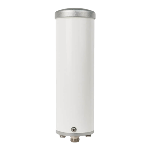
Easy to install rooftop antenna for 50 Ohm signal booster systems with up to 5 dBi.
Buy Now For $79.99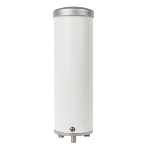
Easy to install rooftop antenna for 75 Ohm signal booster systems with up to 5 dBi.
Buy Now For $79.99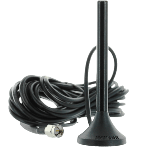
4-inch SMA-male magnetic roof antenna for any vehicle with up to 2 dBi.
Buy Now For $15.00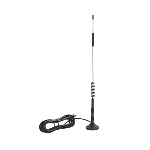
SMA-male omni-directional antenna for cars, trucks, and RVs with up to 5.5 dBi.
Buy Now For $23.00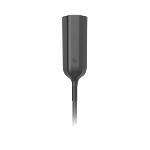
Omni-directional antenna for all RV classes with up to 4.3 dBi.
Buy Now For $119.99How May We Help
Wilson Amplifiers is the leading provider of FCC-approved signal boosters and accessories. Cell phone boosters amplify 5G, 4G, and LTE for any phone with any carrier for home, office, or vehicle.
We seriously hate dropped calls and poor coverage, so it's our goal in life to stomp out spotty signal:
- Free consultation (ask us anything) with our US-based customer support (sales@wilsonamplifiers.com) or call us at 1-800-568-2723.
- Free shipping.
- Better signal or industry-leading 90 money-back guaranteed. No questions asked.
- We want everyone to be satisfied, so we provide lifetime technical support and a 2-year warranty for all products.
Ask us anything and we'll be glad to help.
Interested in Learning More? Check Out Our Signal Boosting Info Center


Money Back Guarantee

Technical Support